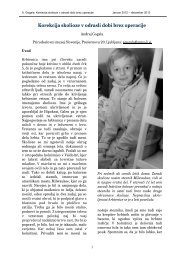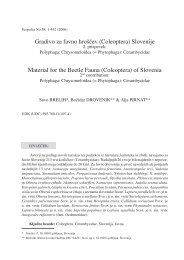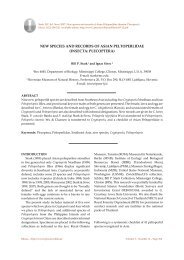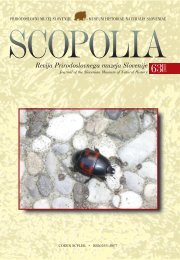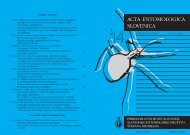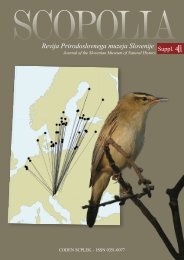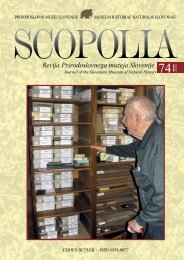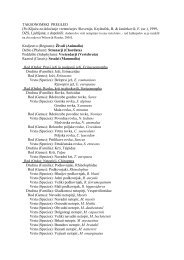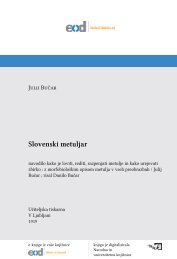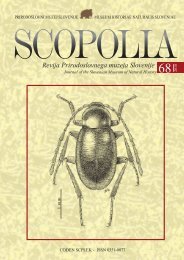Vsebina / Content (.pdf) - Prirodoslovni muzej Slovenije
Vsebina / Content (.pdf) - Prirodoslovni muzej Slovenije
Vsebina / Content (.pdf) - Prirodoslovni muzej Slovenije
Create successful ePaper yourself
Turn your PDF publications into a flip-book with our unique Google optimized e-Paper software.
Acta entomologica slovenica, 18 (2), 2010<br />
Serbia (Petroviå-Obradoviå et al., 2010) only on Q. rubra which seems to present its<br />
main host plant.<br />
Recently, it has been captured on the red oak (Quercus rubra L.) from a single<br />
location in Slovenia. The colonies of aphids were producing large quantities of honeydew<br />
which is a substrate for the growth of sooty mould fungi causing unsightly<br />
appearance of plant.<br />
Description - based on Blackmann and Eastop, 1994<br />
Female alate viviparae, main body bright yellow, distal ends of antennal segments and<br />
costal margin of forewing darkly pigmented. Thorax with black, broad bands running<br />
down sides. Fore tibiae black. Body length (excluding cauda) 1.6-2.0 mm. The Spanish<br />
specimens of the species arrive to 2.13 mm of body length (Nieto Nafría and Mier<br />
Durante, 1998). Nymphs very pale yellow with variably developed dark dorsal sclerites.<br />
Fig. 1: Myzocallis (Lineomyzocallis)<br />
walshii, adult.<br />
Fig. 2: Myzocallis (Lineomyzocallis)<br />
walshii, nymphs on the underside of a leaf.<br />
Fig. 3: Honeydew and moulds soon<br />
afterwards on the upper surfaces of the<br />
contaminated red oak leaves (Quercus<br />
rubra L.) in the village Rodica in 2010,<br />
Slovenia.<br />
Fig. 4: Predator of Myzocallis (Lineo -<br />
myzocallis) walshii.<br />
164



